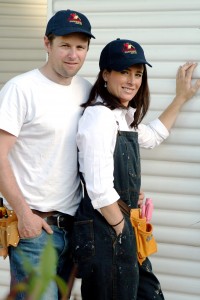I am buying an older house. How do I know if it contains asbestos?
One in three homes built or renovated before 1990 will most likely contain asbestos in some form or another. To confirm if asbestos is present you can have your home assessed by a qualified occupational hygienist or licenced asbestos assessor.
Is there a phone number I can call for Asbestos enquires?
If you live in NSW you can call the 1800 Asbestos Hotline (1800 272 378). The hotline was established by SafeWork NSW to provide free advice and guidance on asbestos-related issues and is a central point of contact for all asbestos enquiries in NSW.
If you live in all other states and territories, you can call the relevant authority in your state.
Mr Fluffy & Loose-Fill Asbestos
For information on loose-fill asbestos ceiling insulation material installed by Mr Fluffy during the 1960s and 1970s in some homes in NSW and the ACT, please contact NSW Fair Trading Loose Fill Asbestos Task Force or the ACT Asbestos Task Force.
Are houses with asbestos roofs safe?
If asbestos cement products are in sound condition and not disturbed, they do not pose a significant health risk. Replace roofing that is weathered, structurally unsound and no longer waterproof. A number of people have died or suffered serious injuries after falling through asbestos cement roofs. Never walk on an asbestos cement roof. They are brittle.
Some asbestos products have a low percentage of asbestos and are therefore safe for me to handle. Is that true?
Treat all products containing any amount of asbestos as potentially dangerous if disturbed. A licenced asbestos removalist should remove all asbestos containing material (ACM).
Can I bury asbestos on my property?
No. It is illegal – and poses a health risk. It must be taken to a facility that can lawfully receive asbestos waste.
Where and how do I dispose of asbestos sheeting?
Contact your council or the relevant authority in your state and territory for waste facilities that accept asbestos in your area. They can provide information on transporting and disposing of asbestos waste safely and legally. To locate your closest asbestos disposal facility visit the Asbestos Safety & Eradication Agency’s disposal database.
I am renovating my bathroom, kitchen and laundry. Should I be concerned about asbestos?
Asbestos products were often used in wet areas of older homes, such as bathrooms, kitchens and laundries. If in doubt, have the material tested by a qualified professional and/or removed by a licenced asbestos removalist.
If I am demolishing a fibro shed, what should I do?
In all states and territories (except the ACT) homeowners are permitted to remove a maximum of 10 square metres of bonded asbestos. However, if there is more than 10 square metres of fibro or other asbestos-containing materials you MUST use a licenced asbestos removalist. If there is less than 10 metres, refer to Safe Work Australia’s Model Code of Practice: How to safely remove asbestos July 2020.
Where do I find an asbestos removalist, and how can I be sure that they are licenced?
Most states and territories in Australia have an online database of licenced asbestos removalists and occupational hygienists.
- ACT
- Access Canberra provide a database of licenced Asbestos Assessors and Removalists
- NSW
- Asbestos & Hazmat Removal Contractors Association (AHRCA)
- The Asbestos and Hazardous Materials Consultants Association (AHCA)
- SafeWork NSW Asbestos and Demolition Licence Holder Database
- NSW residents can also call the 1800 Asbestos Hotline (1800 272 378) for free advice and guidance on asbestos-related issues in NSW.
- NT
- WorkSafe NT provides a database of licenced asbestos removalists
- QLD
- Demolition & Asbestos Industry Association (DAIA
- WorkSafe QLD Licenced Asbestos Removalist Database
- SA
- Government of South Australia list of licenced Asbestos assessors and removalists via asbestos.sa.gov.au
- TAS
- VIC
- WA
- Government of Western Australia does not provide a database of licenced removalists but provides details on how to check a valid licence
Asbestos in Aboriginal Communities Project
Many Aboriginal communities contain fibro houses and buildings and it is essential to provide information regarding health risks, safe behaviours around asbestos containing materials, where it can be found and who to contact.
Aboriginal land is susceptible to illegal dumping of asbestos because it is often located in remote areas or under developed urban parcels of land.
The Asbestos in Aboriginal Communities Project developed a range of resources including a Checklist, Flyer and Poster to help reduce asbestos exposure and illegal dumping. These materials were developed by the Heads of Asbestos Coordination Authorities in consultation with NSW Aboriginal Land Council, NSW Aboriginal Housing Office, Local Aboriginal Land Councils and Aboriginal Housing Providers to understand the asbestos issues affecting Aboriginal communities.
Share this information on:

